Solid timber is beautiful but is veneer a dirty word?
We are often asked, usually with a little apprehension, if there is any veneer in the piece that has caught their eye … often there is but is that a bad thing? Not to us! We oooohed and aaaaahed over both of the below pieces - perfect examples of simple designs taken to another level using a mix of solid timber and timber veneer.
The Oyster Walnut timber veneer is simply stunning in this piece (first below); giving the appearance of flowing over the top edge and down the side of this delightful 1940's Art Deco cabinet and bookcase. Timber veneer is very pliable, allowing the flexibility to create beautiful curved features.
Second and third photos below - again the use of Oyster Walnut timber veneer on this 1920's display cabinet is simply exquisite!
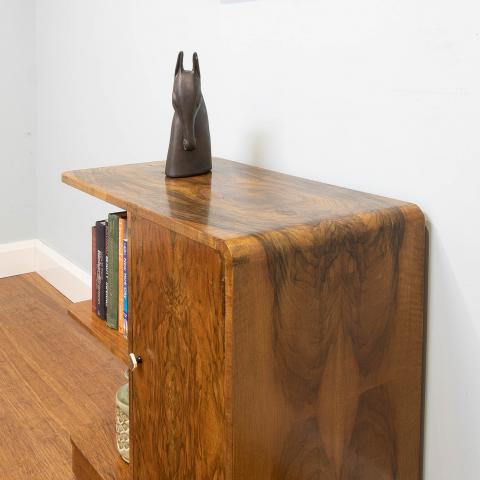


What is timber veneer? Before going further, pleeeeaase let’s not confuse timber veneer with laminate, as many do. Laminate is a much cheaper man-made material, usually manufactured from plastic or other synthetic concoctions. Printed with wood grain patterns, it is designed to replicate real timber.
Timber veneer on the other hand, is real timber, thinly sliced (as in really thin… up to 3mm). The different wood grain pattern achieved depends on how the logs are sliced to create timber veneer sheets. Therefore, unlike laminate, it can be sanded, stained and finished with furniture oil or other timber finishing products.
Below is a stunning circa 1900 Sheraton Revival display cabinet. The use of mahogany timber, mahogany timber veneer and an array of different timber veneers for the inlay and marquetry features is a perfect example of superb craftsmanship using timber veneers.
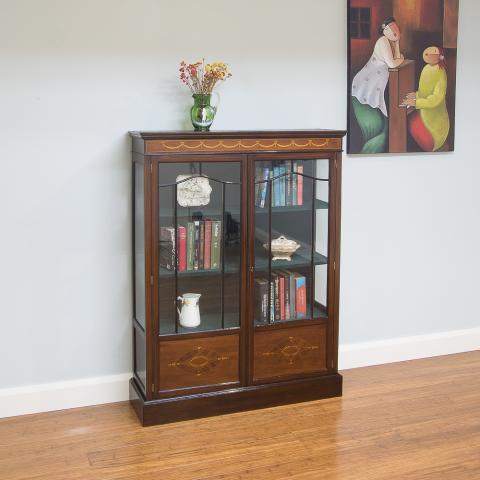
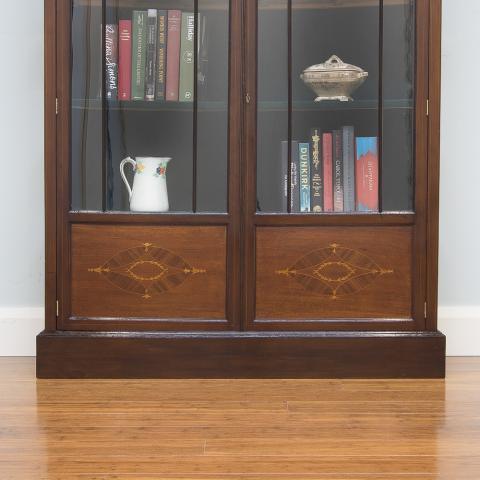
This magnificent Louis XV style chest of drawers (below) is made of solid walnut timber as well as the predominant use of walnut timber veneer as a back-drop to the darker, contrasting walnut veneer banding.
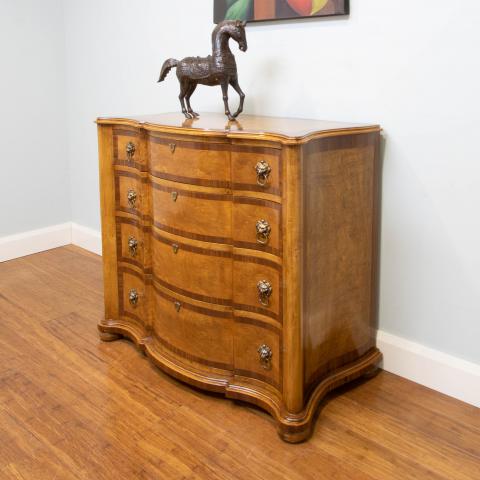
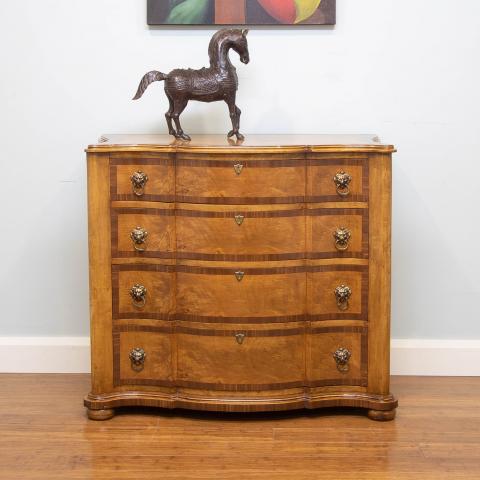
Veneering was invented by the ancient Egyptians; examples were found over 5,000 years ago in the tomb of Semerkhet, named after an Egyptian King who ruled in the first dynasty. Thereafter, the Romans embraced veneering with gusto and from there furniture makers since, crossing through all furniture styles and periods, have used timber veneering extensively and very successfully.
Using timber veneers is environmentally sustainable; as I said previously, veneer sheets are sliced to less than 3mm thick, therefore the sheets can cover large areas. To get the same decorative results with solid timber would use comparatively vast amounts of our precious timber stocks. Commonly, timber veneer is glued to cheaper, more sustainable timber, particle board or core stock.
Striking use of solid timber and timber veneer Brazilian Rosewood in this 1960's Danish made desk (below).
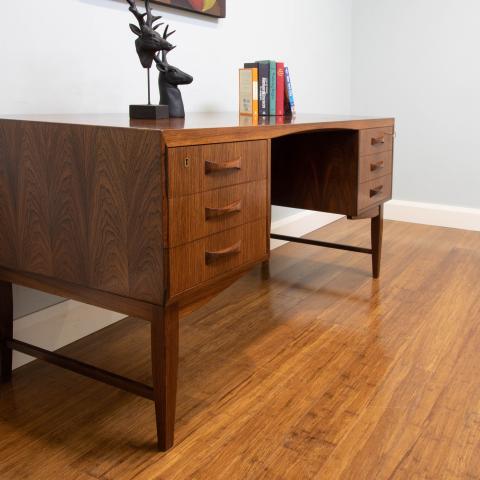

Burl walnut timber veneer is showcased in this 1920's cocktail cabinet (below). The wood grain figuring is just stunning.
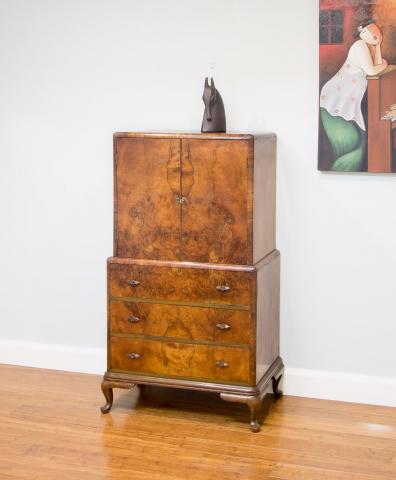
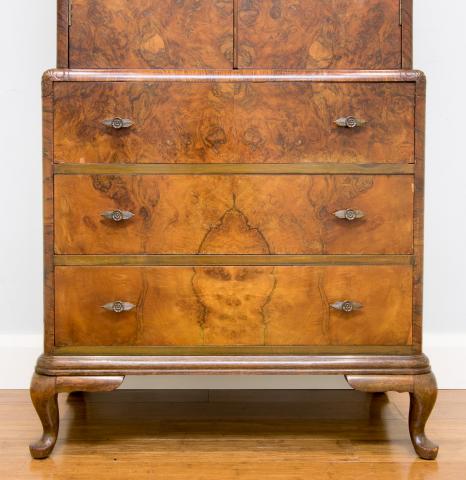
For decorative veneers (commonly used in furniture making) two of the methods of slicing the timber is either a Crown cut; where the timber is sliced parallel to the growth rings, or Quarter cut; where the timber is sliced at right angles to the growth rings, resulting in a straight-line pattern. Once sliced, the leaves of veneer are always kept in sequence to ensure ease of consecutive matching throughout. There are many steps in the veneering process and many more cutting techniques … too many to cover in this little blog unfortunately!
This 1930's oak sideboard (below) is a lovely example of using a mix of carved solid oak timber and magnificent oak timber veneer.
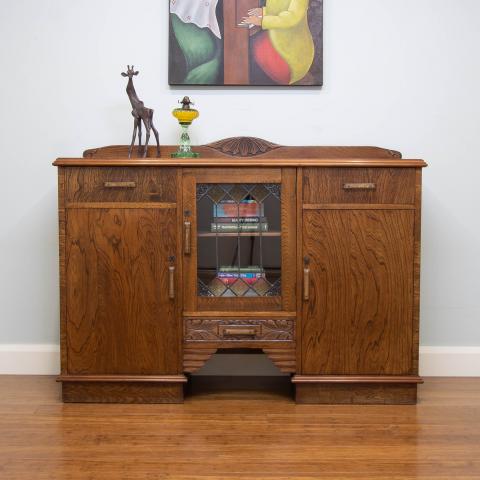
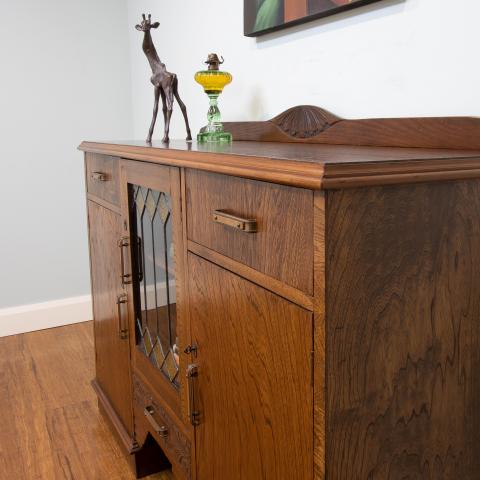
A shared love of ours (being hubby Piet and I) is beautiful timber of all types and the furniture they are made into. The variations of colour and in particular the endless types of wood grain figuring, unique and identifiable to individual timber types, never ceases to fascinate us. Every single piece of timber, within its own type, offers a unique finger (or in this case) wood print – a form that never repeats exactly. This applies of course to both solid timber and timber veneer pieces … the latter after all, is timber.
The way the teak timber veneer is used in this 1960's sideboard (below) creates a striking result. It demonstrates that what can be created with timber veneers is only limited by the imagination of the craftsman.
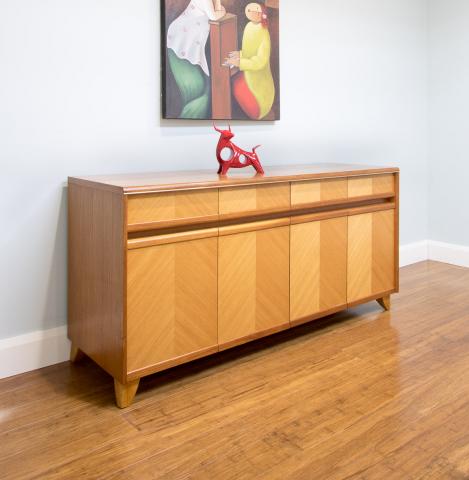
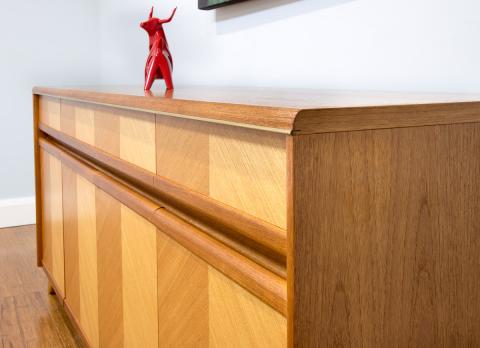
The flowing curves in this mid 1800's Biedermeier chest of drawers, showcasing exquisite flame mahogany timber veneer warms the cockles of my heart!
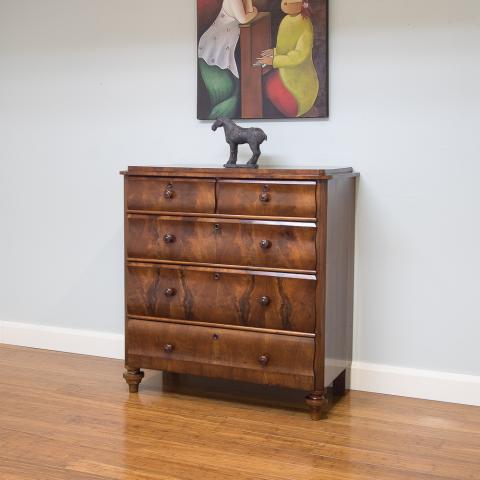

We find it almost impossible to resist running our hands along a gorgeous piece of furniture, regardless if it is constructed from solid timber or a mix of both solid timber and timber veneer – a beautiful piece is just that - a beautiful piece! Absorbed by the feel and engrossed by the beauty of the grain – the affect is always calming … even on a stressful day!
Below is a 1940's desk - its design taken to another level with the use of a mix of solid walnut timber along with decorative walnut timber veneer.
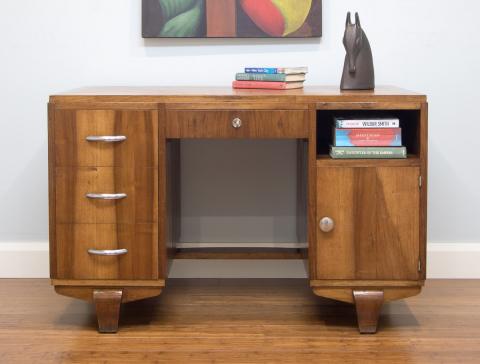

One word to describe this 1960's sideboard (below) - striking. Nothing more to say - it speaks for itself!

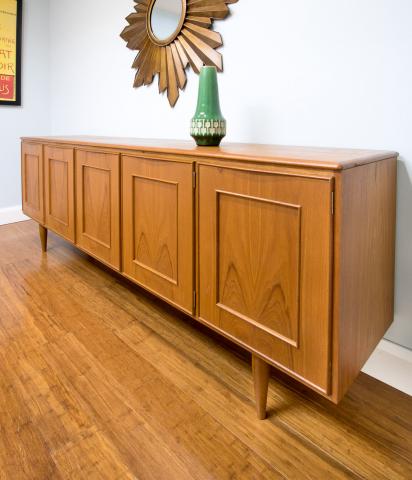
Seeing customers, who come to view our furniture, also run their hand along a piece, makes me think there is something ingrained (pardon the pun) in our being to do this; resulting in the same effect on them and almost always accompanied by ‘’oooooohhh, I love this’’!
So, in the future, don’t pass by a beautiful piece of furniture just because it has components of timber veneer, because in our book and also in those of furniture makers going way back to ancient Egyptian times, timber veneer is definitely not a dirty word!
Last but not least, below is a Ladderax wall unit … not only is the teak timber veneer used to add interest to the front face, it adds a lovely depth to the drop-down servery tops.
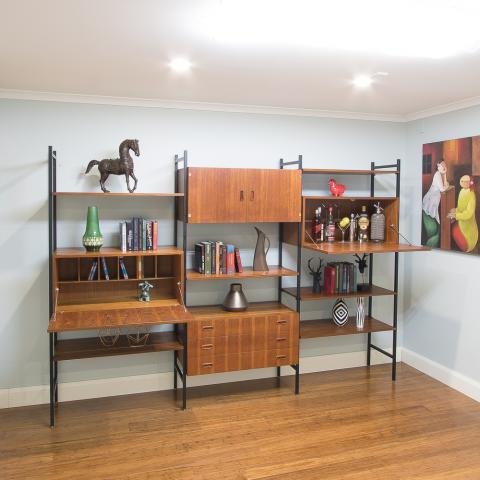
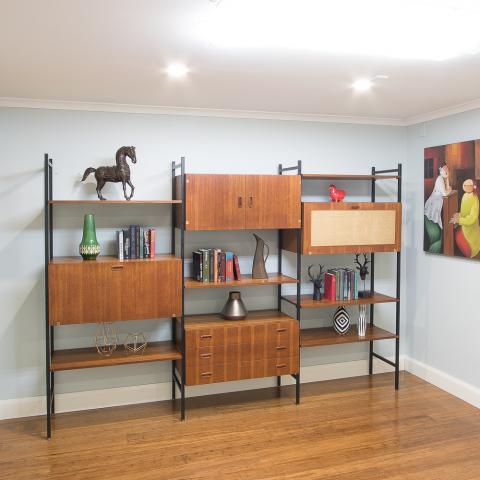

Hi webmaster